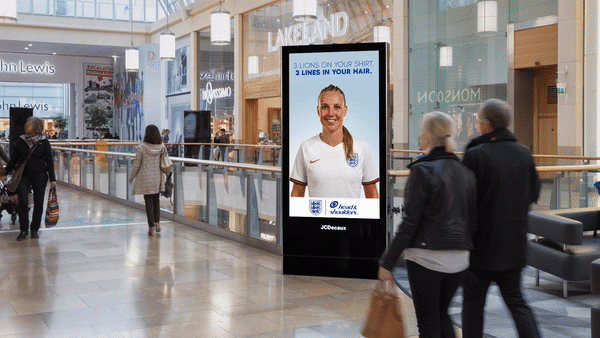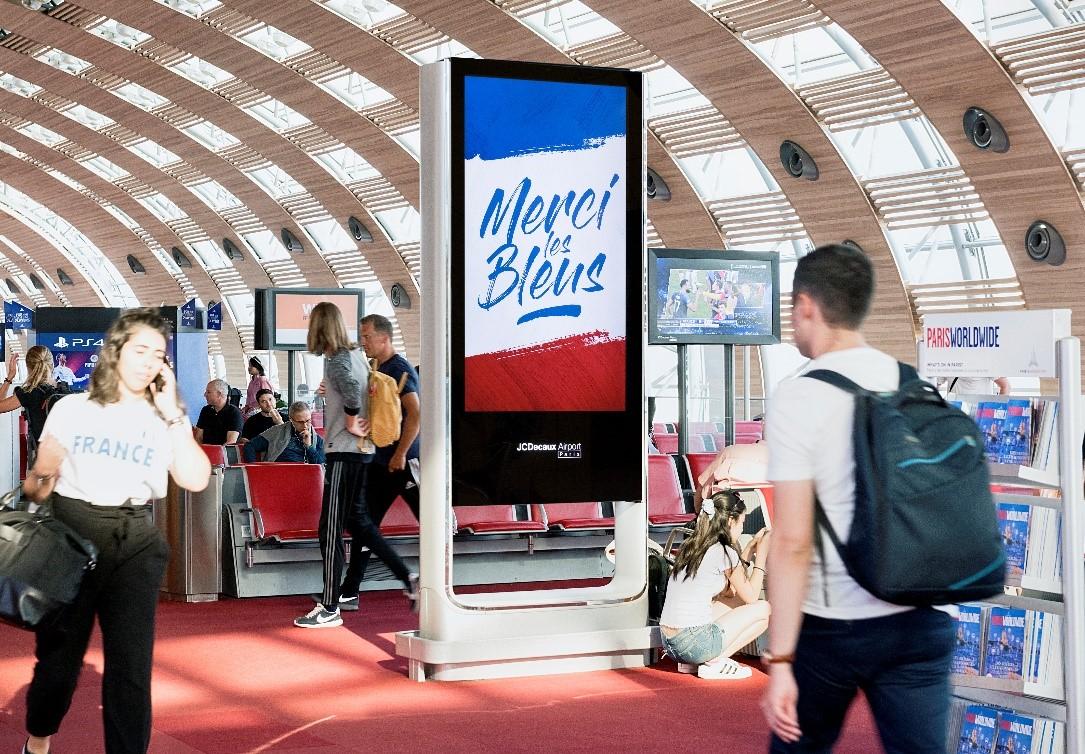“Football’s Out-of-Home, it’s Out-of-Home…”: how brands used OOH to connect with fans at the Women's World Cup
A Footballing Summer
The footballing calendar is relentless: only a few days after the end of the European club season in early June, the FIFA Women’s World Cup™ kicks off, contested by 24 teams from across the globe in nine French host cities. This summer’s edition is set to be the most viewed on record: FIFA aim to attract a global television audience of one billion, up from 750 million in 2015.
The tournament arrives amid a groundswell of popularity in the women’s game: in March, Atlético Madrid and Barcelona set an attendance record for a women’s club match with over 60,000 spectators; and players such as Marta and Alex Morgan are already global stars.
Perhaps unsurprisingly, brands have been rushing to associate themselves with the Women’s World Cup. Lucozade Sport has reworked Three Lions – the bittersweet England supporters’ song originally written and performed by comedians David Baddiel and Frank Skinner and Britpop band the Lightning Seeds in the 1990s – with new lyrics dismissing the sometimes-sexist attitudes to women’s football. Claire Keaveny, Lucozade Sport’s head of marketing, commented on the campaign to Marketing Week: “My hope is people are increasingly talking about the Women’s World Cup and we’ve created part of that conversation… This is a real chance for us to be part of that change in perception.”
Meanwhile, men’s teams will be competing in continental tournaments in Europe, Africa, North, Central and South America – each of which is set to attract a huge regional following of its own.
These tournaments offer rare marketing opportunities, both in terms of sponsorship and engaging with a captivated audience, and may enable brands to position themselves as progressive. According to GlobalWebIndex, 83% of the audience for the Women’s World Cup would prefer greater gender equality, while Performance Communications and Canvas8, a behavioural insights specialist, commented in their report The Future Sports Fan that “female fans [will soon] become equal to male fans. Female sports have arrived.”
Whether it is in the host nation, the countries competing in the tournament or in any country with a strong football following, OOH is an excellent tool for activating partnerships and fostering meaningful engagement with an enthralled audience.
"My hope is people are increasingly talking about the Women’s World Cup and we’ve created part of that conversation… This is a real chance for us to be part of that change in perception.”Claire Keaveny Head of Marketing, Lucozade Sport

An Omnichannel Approach
The majority of fans who follow these global events aren’t able to attend the matches, because they live far from France, the host country; however, even beyond traditional television broadcasting, spectators now engage with football in new ways. Fans consume the sport through multiple touchpoints which stretch far beyond the 90 minutes of action on the pitch, as brands, broadcasters, publishers and supporters alike connect during the build-up and after the game.
Social media strategies are crucial for clubs looking to build brand fame, maintain buzz around the team and drive fan engagement – notable recent examples include Bristol City FC’s goal celebration GIFs, AS Roma’s Twitter feed and England’s Women’s World Cup squad announcements from celebrities including Prince William and David Beckham.
OOH and social are proven to work well in combination, with the former boosting the business effects (such as profit, sales, market share) of social campaigns by 20%. The proliferation of Digital Out-of-Home (DOOH) ensures that outdoor panels can now act as an extra component of a digital or social communication strategy, through the ability to deliver relevant, often interactive content to a mass audience. For example, at the men’s 2016 European Championships, Continental Tyres displayed quiz questions on outdoor screens in the UK – fans had the opportunity to win tickets to the final by answering these questions correctly on social media with the hashtag #ContiQuiz.
Brands have the opportunity to engage with fans by running OOH campaigns that add to the matchday experience: data-driven campaigns can deliver live scores or match news automatically and moderated social feeds can be integrated into DOOH creatives. These campaigns can also support the community spirit that sports events create, and help brands connect with fans on an emotional level: the agility of DOOH allows quick-thinking brands to capitalise on the day’s events by pushing reactive, often humorous, content.
Activation Innovation
For brands and partners looking to engage fans directly, experiential activations offer a great opportunity. Supporters often watch football tournaments together in fan zones, large outdoor locations, fostering community and attracting spectators who might not usually take an interest in football. Fan zones can be readily built in many train stations and airports around the world, or in interactive bus shelters, taking advantage of commuters’ extended dwell time and readiness to interact.
Time For Action
Using the OOH medium effectively through live, reactive content and experiential opportunities is a great way to stand out from the crowd and engage with football fans. With an action-packed schedule ahead, it certainly promises to be a great summer of entertainment.

Want to know more?






